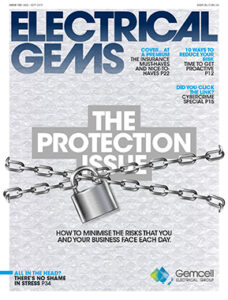So you need to switch off the power? Using isolation devices appropriately and correctly is key to electrical safety. Here’s the lowdown from Master Electricians Australia.
Isolated power supplies provide a barrier across which dangerous voltages won’t pass. To eliminate electrical energy, an electrician must operate an isolation device. This could be a switch, circuit breaker or the removal of a fuse. After the device is operated, it must be rendered inoperable. This may be achieved by having the isolation device under the worker’s sole control all the time. In this case, the worker would be prohibited from leaving the site where the device is situated until the work is completed and all electrical risks are removed.
If a fuse is removed, additional activities such as removing the circuit wiring from the fuse base or placing a lockable cover over the fuse base are required to prevent someone from replacing the fuse into the fuse base.
“If a fuse is removed, additional activities are required. Keeping a fuse in a worker’s pocket would not be sufficient.”
If a switch or circuit breaker is opened a locking device must be applied to the switch mechanism to secure the switch or circuit breaker in the open position.
The Isolation Process: isolation permits
Isolation permits are an important document for group isolation procedures involving complex switching. This permit documentation should enhance the risk assessment process and provide robust isolation for the safety of workers. For more complex networks or equipment, isolation or switching sheets should be developed in consultation with line or schematic electrical drawings. Some examples of complex networks may include:
• Control equipment in association with a main supply. Other energy sources from air, fluid, vacuum or weighs and other stored energy
• Motor generator units
• Photovoltaic systems
• Uninterruptable Power Supply systems (UPS)
• Capacitors and Emergency backup supplies
The Isolation Process: multiple locks
When multiple devices have been operated or multiple workers are working under the one isolation, a lock box type device must be used as part of the isolation process.
The lock box has multiple locks, generally keyed alike. Once all locks have been applied to the isolation devices the keys are placed in the secure box. All workers can then apply their individual personal locks to the box lid to prevent it from being opened. This prevents the isolation being reversed until all workers from the site have removed their personal locks and ensures both the safety of workers and reduction of the level of risk.
Isolation device safety signage
An isolation device must also have robustly constructed signage, securely attached to it in a prominent position. The sign must include appropriate safety warnings for example “Danger Do Not Operate”. This may also be referred to as a danger tag. The information on the tag or sign may also include:
• The Worker’s name
• Contact details
• Estimated time of supply restoration
• Any other relevant information
Testing after isolation
After the isolation has been performed, tests must be conducted to prove the isolation is effective and eliminated the electrical energy from the circuit and/or equipment.
When testing for dead, the worker must ensure suitable attachment points for the test instrument probes are established.
When isolating 3-phase systems, testing between phases may not identify a defective switch where 1 phase may have remained energised. Proper test points must be identified and testing between each phase, neutral and earth is vital.
When conducting tests for dead, the worker must prove on a known supply that the test equipment is operating correctly. The operation of the test equipment must be proved immediately before and immediately after the test for dead.
In addition, the worker must:
• Select the correct range on the voltmeter whether testing for direct current or alternating current voltages
• Visually confirm that the test equipment is fit for purpose
• Check the test equipment has been tested (calibrated) in accordance with manufacturers’ instructions
• Check the test equipment is appropriate for the location of the tests, example Cat III or Cat IV
• Check the instrument has fused leads and the insulation of the leads shows no damage.
















































































